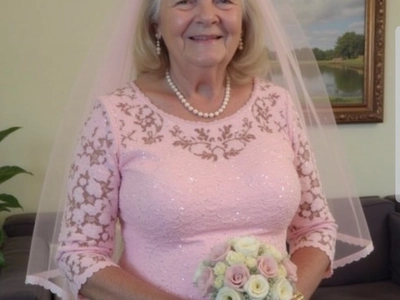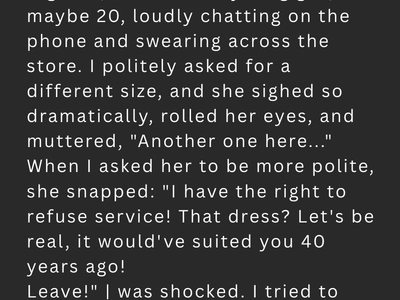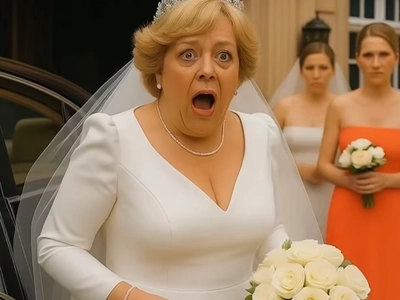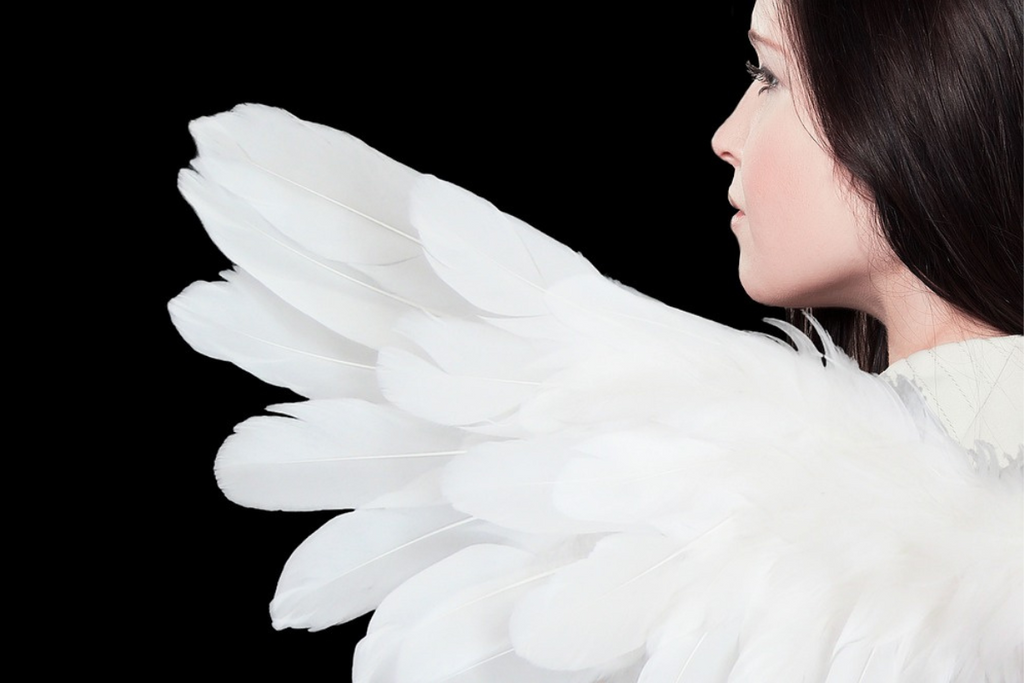She Laughed at My Pink Wedding Dress at 60 — Until My Son Stood Up and Spoke the Truth
At sixty, I decided it was finally my turn. For years, I had lived for everyone else—my son, my work, my responsibilities—but somewhere along the way, I forgot who I was. So, when I chose to marry again, I wanted everything about that day to feel like me. I designed my own wedding dress—a soft pink gown made of lace and satin, sewn carefully by hand. It wasn’t perfect, but it was mine. It was more than a dress; it was a declaration. After a lifetime of fading into the background, I was ready to be seen. But what was supposed to be the happiest day of my life turned into something else entirely when my daughter-in-law laughed at me in front of everyone.
My son, Lachlan, changed that moment forever when he picked up the microphone and reminded the whole room who I truly was.
But to understand what that meant, you have to know where I came from. My story didn’t start with romance—it started with survival. My husband left when Lachlan was just three years old. No warning, no fight, just the sound of a suitcase zipper and a man who couldn’t handle responsibility. I still remember his words, flat and selfish: “I don’t want to share you with a toddler.” Then he was gone. I stood in our small kitchen that night, holding Lachlan in one arm and a stack of unpaid bills in the other. I didn’t cry. I didn’t have time to.
From then on, every day was about making it to the next. I became a machine built for function. During the day, I worked as a receptionist. At night, I waited tables at a diner. I barely slept. There were nights I’d come home after midnight, heat up leftovers, and eat them on the kitchen floor because it was too quiet to sit at the table alone. I’d tell myself, “Just get through tomorrow.” And then I’d do it all again.
We didn’t have much. Lachlan’s clothes came from church donations or the kind neighbors down the street. I’d patch holes, hem sleeves, and make do. It was exhausting, but I found small peace in the sound of a sewing needle sliding through fabric. Sewing became my private joy, my only creative outlet. Sometimes I’d picture myself in something pretty—maybe a pink dress or something with lace—but then I’d push the thought away. That was indulgent, and indulgence wasn’t allowed in my life.
My ex-husband had made sure of that. Even though he was gone, his voice lived rent-free in my head. “No pink,” he’d say. “No white. You’re not a bride anymore.” He mocked softness, joy, anything bright. “Pink’s for silly little girls.” So I wore beige, gray, brown. I tried to blend in, until I wasn’t even sure I existed outside my duties. I became the quiet hum behind everyone else’s life, invisible and steady.
But Lachlan grew up to be everything I hoped he’d be—kind, strong, respectful. He married a woman named Jocelyn, and I tried to welcome her with open arms. I told myself my work was done. My son had built his own life. Now I could rest, or at least pretend to.
Then, one summer afternoon, a runaway watermelon changed everything.
I was in the grocery store parking lot juggling shopping bags when a watermelon rolled out of my cart and nearly escaped down the hill. “Before that melon makes a break for it,” a voice called out. I turned and saw a man smiling at me, his hand already catching it mid-roll. He had kind eyes and a gentle humor that immediately disarmed me. His name was Quentin. He was a widower, older but not worn down by it. We talked right there beside my trunk for half an hour—about groceries, about cooking, about the ridiculous heat. I couldn’t remember the last time I’d laughed like that.
Coffee dates followed, then dinners. He never treated me like someone who was “past her time.” He liked my simple clothes, my calloused hands, my realness. There were no games, no pretenses. He listened when I spoke and never interrupted. One night, over pot roast and red wine, he reached across the table, eyes steady, and asked me to marry him. No big production, no audience. Just us. Just sincerity.
I said yes.
When I started planning the wedding, I knew I didn’t want white or beige. I wanted pink. A soft, unapologetic pink that whispered, “I’m still here.” I bought the fabric on clearance—a blush satin with tiny floral lace. I carried it home like it was treasure. That night, I spread it over my kitchen table and ran my fingers along the edge. My heart raced like I was breaking some long-forgotten rule. Maybe I was.
For three weeks, I worked on that dress. Each stitch was like therapy. I’d hum softly while I sewed, and sometimes I’d smile without realizing it. When it was finally done, I couldn’t stop staring at it. It wasn’t perfect—some seams were uneven—but it felt alive. It felt like me.
One afternoon, I showed it to Lachlan and Jocelyn. It hung across my sewing table, catching the light through the window. Jocelyn wrinkled her nose immediately.
“Pink?” she said, laughing. “Seriously? At your age?”
I tried to stay calm. “It makes me happy,” I said.
She smirked. “You look like a kid playing dress-up. You’re a grandma, not a cupcake.”
Lachlan looked uncomfortable, but said nothing. I smiled tightly, pretending it didn’t sting. After all, I had spent a lifetime swallowing pain politely. But later that night, when I was alone, I touched the fabric again and whispered to myself, “Don’t let her steal this.” Because joy, once stitched into your soul, doesn’t come undone so easily.
When the wedding day arrived, I stood in front of my mirror and barely recognized the woman looking back. My hair was pinned up, my makeup soft. The dress fit like it was always meant to be mine. It hugged the parts of me I’d once wanted to hide. The color wasn’t loud—it was gentle, warm, alive. I looked like a woman starting again, not fading away.
The ceremony was simple. Friends, family, laughter. The hall smelled of flowers and cake. People smiled as I walked in. Some said I looked radiant, others said they loved the color. For the first time in years, I let myself believe them.
Then Jocelyn walked in.
She scanned me up and down and scoffed loud enough for people nearby to hear. “Oh my god,” she said, laughing. “You actually wore it. You look like a cupcake at a kid’s party. Aren’t you embarrassed?”
A few guests chuckled awkwardly. My face burned. I tried to hold my smile, but her words pierced through. Then she added, “You’re embarrassing Lachlan. What will his friends think?”
That old voice, my ex-husband’s voice, whispered in my head: You should’ve worn beige. You should’ve stayed quiet. For a moment, I almost believed it.
Then Lachlan stood up.
He tapped his glass and said, “Excuse me, everyone, can I say something?”
The room fell silent.
He turned to face the crowd, his voice calm but firm. “You see my mom in that pink dress? That’s not just fabric. That’s her life. Every stitch in that dress was made by the woman who worked two jobs to raise me. She never bought herself anything nice because she was too busy making sure I had what I needed. For decades, she put herself last. And now, she finally did something for herself. She made that dress. Every thread is her story. That pink? That’s her joy. That’s her courage.”
He looked straight at Jocelyn. “If you can’t respect that, then maybe you should think about what kind of person laughs at someone else’s happiness. But I will always defend the woman who raised me.”
Then he lifted his glass and said, “To my mom. To pink. To joy.”
The room erupted in applause. Glasses clinked. A few guests shouted, “Well said!” My eyes blurred with tears. Jocelyn muttered something about “just joking,” but no one laughed with her this time.
After that, something shifted. People didn’t just see me as a mother or a guest—they saw me. A woman who had lived through storms and still chose to wear color. Guests came up to me, complimenting the dress, asking if I took custom orders. Someone said, “You look like happiness itself.”
When Quentin took my hand for our first dance, he whispered, “You’re the most beautiful bride I’ve ever seen.” And for once in my life, I didn’t try to argue. I believed him.
Jocelyn spent most of the evening scrolling on her phone in the corner, pretending not to notice that no one wanted to talk to her. I didn’t feel bad. For years, I’d let people like her make me smaller. Not anymore.
The next morning, she texted me: You made me look bad. Don’t expect an apology.
I looked at the message for a long moment, then deleted it. She didn’t need to make herself look bad. She’d done that all on her own.
Later that day, I sat by the window with my sewing machine, the same one I’d used for decades. Sunlight spilled across the table, glinting off the leftover scraps of pink lace. For years, I had believed that being a good mother meant sacrificing everything. That joy was for other people. That once you hit a certain age, your story stopped being about you.
But standing in that hall, in that pink dress, surrounded by people who finally saw me, I realized how wrong that was. Joy doesn’t have an expiration date.
That dress wasn’t about looking young or trying to prove anything. It was about reclaiming color after a lifetime of gray. It was about saying, “I’m still here, and I still matter.”
Now, when I look at that dress hanging in my closet, I don’t see fabric. I see proof. Proof that it’s never too late to choose yourself. Proof that courage can look like satin and lace. Proof that pink belongs to anyone brave enough to wear it.
And maybe that’s why I smile every time I see someone hesitating—someone too afraid to stand out, too afraid to be seen. Because I know what that fear feels like. I lived in it for decades.
But pink looks too good on me to hide anymore.
So I’ll ask you this: What color are you scared to wear—and why?






